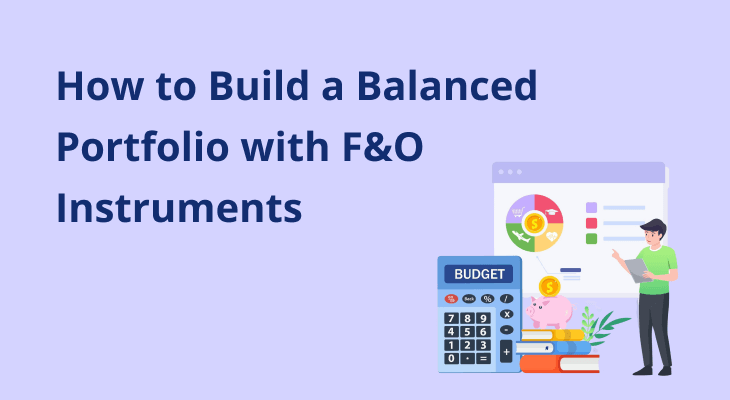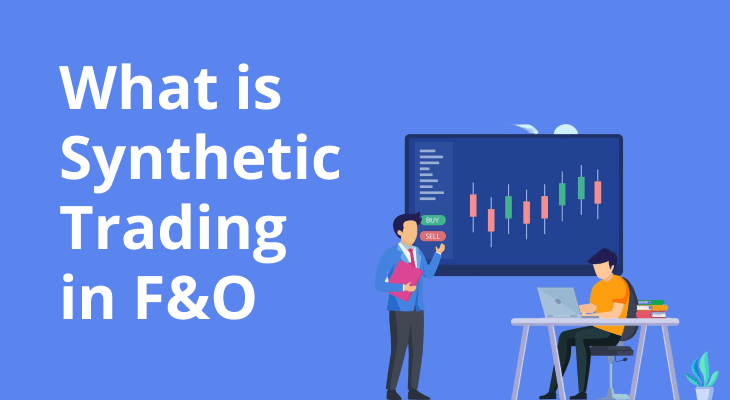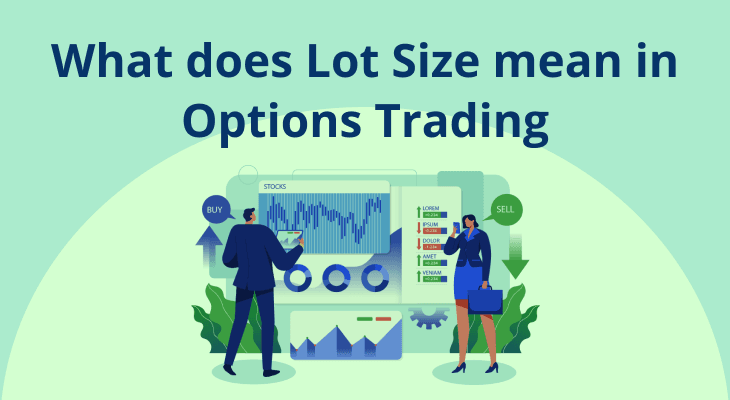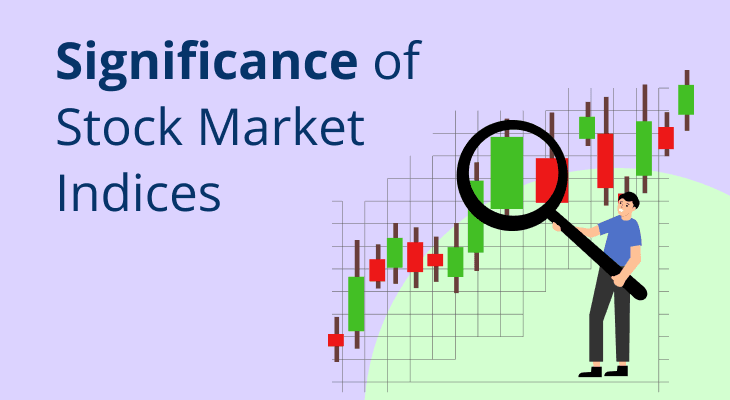
How to Build a Balanced Portfolio with F&O Instruments
Building a balanced investment portfolio with F&O instruments involves more than just picking a few futures contracts or options strategies. You need a systematic approach to asset allocation, hedge market exposure with futures contracts, employ options strategies for asymmetric returns, diversify across sectors and volatility regimes, and implement strict risk management and position sizing. By combining these elements, you can create a resilient portfolio for the share market that can withstand volatility and align with your financial goals.
Here’s everything you need to know to effectively build a balanced portfolio with F&O instruments.
Understanding Portfolio Balancing in Derivatives
A balanced portfolio in the trading market allocates risk and return potential across various instruments and markets. At its core, portfolio balancing ensures that no single position or market movement can derail your overall performance. Traditional portfolios mix equities and bonds, but a derivatives-focused portfolio uses futures and options to tailor exposure and hedge unwanted risk.
The first step is defining your investment objectives such as growth, income, or capital preservation, and assessing your risk tolerance. Younger investors may tolerate leverage in futures, while conservative traders may limit exposures to protective options strategies.
Next, determine the ideal asset allocation across cash, underlying equities, index futures, and various option structures. This framework acts like an investment controller, automatically adjusting exposures as markets move, preventing overreaction to temporary price swings.
A balanced derivatives portfolio combines the deep liquidity and leverage of futures with the asymmetric payoff profiles of options, creating a holistic approach to risk and reward.
Using Futures to Hedge Market Risk
Futures contracts allow you to lock in a price for an underlying asset at a future date, offering a precise instrument to hedge against adverse market movements. For example, if you hold a large equity portfolio, you can short Nifty futures to offset potential declines in your holdings. A perfect hedge, although rarely achieved in practice due to basis risk and contract size constraints, offsets market risk by taking an equal and opposite position in the futures market.
Benefits of Futures Hedging
Futures contracts are powerful tools for mitigating risk in an investment or business that is exposed to price fluctuations. Beyond the basic hedge, several additional benefits make futures an essential component of a balanced portfolio.
1. Precise Price Risk Elimination
By taking an offsetting position in a futures contract, hedgers can lock in a price for the underlying asset, effectively eliminating the uncertainty of future price movements. This precision ensures that the value of inventory or investments is protected against adverse market shifts.
2. Capital Efficiency Through Leverage
Futures require only a margin deposit (a fraction of the total notional value) freeing up capital for other investments or operational needs. This leverage allows hedgers to achieve significant exposure with relatively small outlays.
3. Flexibility in Hedge Ratio Adjustment
Unlike fixed contract sizes in physical markets, futures let you adjust your position to closely match the size of your exposure. Traders can finetune the hedge ratio by varying the number of contracts, achieving near‑perfect hedges even when exposures do not align exactly with standard lot sizes.
4. High Liquidity and Market Depth
Major futures markets such as those for equity indexes, commodities, and interest rates offer high liquidity, which ensures tight bid‑ask spreads and minimal slippage. This liquidity enables quick entry and exit from hedge positions without significant price impact.
5. Diversification Across Asset Classes
Futures are available on a wide array of underlyings, from stock indices and individual equities to commodities, currencies, and even weather derivatives. This allows hedgers to manage risk across multiple markets within a single trading platform.
6. Standardised Contracts and Central Clearing
Futures contracts are standardised in terms of quantity, quality, and expiration, and are cleared through central counterparties. This reduces counterparty risk and provides transparency in pricing and settlement, unlike bespoke OTC derivatives.
7. Cost‑Effective Hedging
Transaction costs in futures markets, comprising brokerage and exchange fees, are typically lower than those for options, which include premium payments. Futures hedges can thus be implemented more economically, especially for large exposures.
8. Short and Long Hedge Capability
Futures can hedge both long and short exposures. Producers worried about price drops can sell futures (short hedge), while consumers fearing price rises can buy futures (long hedge), making futures universally applicable for diverse risk scenarios.
9. Real‑Time Pricing and Valuation
Futures prices are updated continuously during trading hours, offering immediate feedback on hedge effectiveness and enabling dynamic risk management without waiting for end‑of‑day valuations.
10. Opportunity for Speculative Gains
While the primary goal of hedging is risk reduction, hedgers can sometimes realise additional gains. If market movements are favorable relative to the hedged position, the futures hedge can contribute to overall profitability
Options Strategies for Risk‑Adjusted Returns
Options provide a powerful way to develop defined‑risk strategies and enhance returns. By combining calls and puts, you can generate income, protect downside, or exploit volatility.
Covered Calls
Writing covered calls involves selling call options against an existing stock or futures position. You earn premium income, reducing the effective purchase price. If the underlying rallies beyond the strike, you deliver at the strike price, capping upside but ensuring a profit.
Protective Puts
Buying put options offers insurance against market drops. A protective put limits your downside to the strike price less the premium paid, while still allowing unlimited upside if the market rises.
Spreads and Combinations
- Bull Call Spread: Buy a lower‑strike call and sell a higher‑strike call to reduce premium outlay, profiting if the market rises within a range.
- Bear Put Spread: Buy a higher‑strike put and sell a lower‑strike put to profit from controlled downside moves.
- Straddles and Strangles: For volatility plays, buy calls and puts at (straddle) or around (strangle) current prices to benefit from large moves in either direction.
These strategies allow you to tailor payoffs and manage risk precisely, providing convexity—the potential for large gains while bounding losses.
Diversifying Across Sectors or Volatility Levels
Derivatives diversification means not only spreading risk across asset classes but also across sectors and volatility regimes.
Sector Diversification
Allocate futures and options on index sectors like banking, pharma, tech, and FMCG to avoid concentration in one area. For example, you might long pharma futures and short banking futures, expecting relative outperformance of healthcare. This pairs trade reduces market‑wide beta and isolates sectoral views.
Volatility Diversification
Trade volatility itself through VIX futures or options, which often move inversely to equity markets. Adding volatility futures can hedge unexpected market shocks, smoothing portfolio returns.
Multi‑Asset Diversification
Expand beyond equities to commodity futures (gold, crude oil) and currency forwards. An integrated portfolio might include Nifty futures, gold futures, and USD/INR forwards to balance equity, commodity, and FX exposures.
By diversifying your trade portfolio across sectors and volatility instruments, you reduce the chance that a single market event wipes out your entire investment portfolio.
Risk Management and Position Sizing
Strong risk management is vital in the F&O market, where leverage can amplify gains and losses.
Position Sizing
Determine maximum risk per trade as a percentage of your total capital, commonly 1–2%. For example, if you have ₹20 lakh capital, risking 1% means a ₹20,000 max loss per position. Adjust futures and options notional sizes accordingly.
Margin and Leverage
Understand margin requirements: Futures margins equal a small percentage of notional value, while options margin includes premium paid and potential assignment risk. Avoid over-leveraging by monitoring real-time margin usage.
Stop‑Loss and Contingent Orders
Implement stop‑loss orders on futures and triggers on options to protect against rapid adverse moves. For options, consider closing positions at a predetermined loss threshold or using spreads to cap max loss.
Monitoring Greeks
For options, track Greeks: Delta (directional exposure), Vega (volatility), Theta (time decay), and Gamma (acceleration). Balancing these exposures helps maintain a stable risk profile and informs position adjustments as market conditions change.
Effective risk management and disciplined position sizing ensure that no single trade can jeopardise your asset allocation or overall portfolio.
Conclusion
Building a balanced portfolio for the share market with F&O contracts requires a structured approach: define your risk tolerance, allocate exposures across cash, futures, and options, hedge with futures, employ options for asymmetric payoffs, diversify across sectors and volatility instruments, and rigorously manage risk and position sizing.
By following these steps that are grounded in sound asset allocation principles and supported by corporate action adjustments from SEBI and exchanges, you can harness the trading market’s leverage and flexibility while preserving capital. A well-balanced derivatives portfolio not only aims for superior returns but also stands resilient against unpredictable market swings.
FAQ
What does it mean to build a balanced portfolio with F&O instruments?
Building a balanced portfolio with F&O (Futures and Options) means combining different F&O strategies—like hedging with futures or using options for risk-reward balance—to manage volatility, protect capital, and enhance returns while staying aligned with your risk tolerance and market outlook.
Why should F&O instruments be part of a trading portfolio?
F&O instruments allow you to hedge risks, generate income through strategies like covered calls, and take directional bets with limited capital. Including them in your portfolio helps manage uncertainty, improve returns, and create a more flexible and responsive trading strategy.
Can beginners use F&O to build a portfolio?
Yes, but with caution. Beginners should first understand basic F&O concepts and start small—using simple strategies like index futures for hedging or protective puts. Avoid complex strategies until you're confident. Risk management and education are key when starting with F&O instruments.
How does asset allocation work in an F&O-based portfolio?
In F&O-based portfolios, asset allocation involves choosing how much exposure to take in equities, indices, commodities, or sectors using futures and options. It includes deciding how much to hedge and how much to trade directionally, balancing safety with potential returns.
How can futures be used to hedge market risks in a portfolio?
You can use index or stock futures to protect your portfolio from downside risk. For example, if you hold Nifty stocks, selling Nifty futures creates an offsetting position. If markets fall, futures gain value, helping reduce overall portfolio losses.
What are some useful options strategies for portfolio balancing?
Popular strategies include covered calls for income, protective puts for downside protection, and spreads (like bull spreads) to limit risk. These strategies allow you to manage volatility, limit losses, and enhance returns based on your market view and risk appetite.
How does position sizing help in risk management for F&O trades?
Position sizing means deciding how much capital to risk per trade. Proper sizing ensures that one bad trade doesn't wipe out your portfolio. In F&O, due to leverage, even small positions can have big effects. So, sizing based on your total capital is crucial.
Should you diversify across sectors in an F&O portfolio?
Yes, sector diversification reduces the impact of sector-specific downturns. You can use sectoral futures (like Bank Nifty) or stock options from different industries. Spreading exposure ensures your entire portfolio isn’t dependent on the performance of a single market segment.
What are some common mistakes to avoid while building an F&O portfolio?
Avoid over-leveraging, trading without a plan, ignoring stop-losses, or using complex strategies without understanding them. Many traders also fail to account for transaction costs, margin requirements, and volatility. Patience and discipline are essential to succeed with F&O instruments.
How are F&O instruments taxed in a trading portfolio?
Profits or losses from F&O trading are treated as business income under Indian tax laws. They are taxed as per your applicable income tax slab. You must maintain detailed records and may need to file tax returns using ITR-3 with proper audit if turnover exceeds limits.


